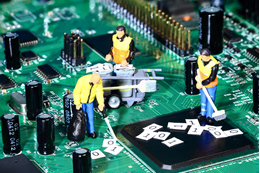Flux-Off Rosin
Plastic safe flux remover for cleaning all rosin and rosin-based no-clean flux
The Flux-Off® Rosin formulation is a fast drying aerosol that quickly and completely removes R, RMA, RA, and synthetic flux residue. With its low surface tension and superior wetting properties, Flux-Off® Rosin removes harmful residues in tight tolerance areas.
Available with The BrushClean™ System - Gentle scrubbing action of a brush combined with high performance flux remover. Click here for more information.
Features & Benefits
- Safe on plastics
- Removes all rosin-based fluxes
- Removes ionic and non-ionic activators
- Dries fast
- Leaves no residue
- Flammable
- All-Way Spray valve - even sprays upside down
- Available with BrushClean™ System
Applications
- Cleans type R, RMA, RA and Rosin-based no-clean flux
| TDS | |
| REGS | |
| SDS | |
| Categories |
| Specifications | NSN # 6850-01-418-0499 |
|---|---|
| Call-outs | Ford - 134352 |
| Shelf Life | 5 yrs. |




